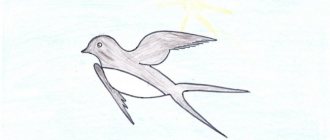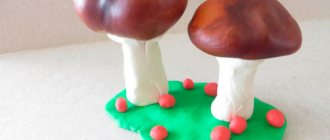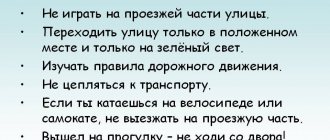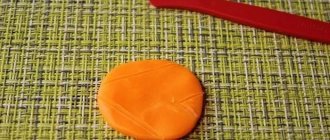Notes on drawing “Different houses have been built in the village” (children 5–7 years old)
Lyubov Petrik
Notes on drawing “Different houses have been built in the village” (children 5–7 years old)
Topic of the week: “My village”
GCD topic: “ Different houses have been built in the village ”
.
Educational field: Artistic and aesthetic development.
5-6 years: Teach children to convey the variety of rural houses : tall and long, lower and narrow, one-story. Strengthen the ability to convey the shape of parts of houses. Practice drawing with colored wax crayons.
6-7 years old: Teach children to convey in a drawing a picture of an evening village, color scheme: the houses are lighter than the night air, multi-colored lights . Strengthen the ability to draw up your plan, compositionally arrange the image on the sheet.
Form of organization: frontal, subgroup.
Preliminary work: Excursions along the streets of the village, looking at photographs, illustrations, postcards depicting houses of different types , conversation on the topic: “What kind of house do you live in?”
, reading proverbs and sayings, poems about the homeland,
constructive games .
Integration of educational areas: “Artistic and aesthetic development (music)
",
"Speech development"
, Social and communicative development",
"Physical development"
,
"Cognitive development"
.
Techniques: Surprise and game moments, creating a problem situation, showing and examining illustrations, conversation, artistic expression.
verbal: reminder, questions, individual answers from children, encouragement, lesson analysis;
visual: viewing, viewing;
gaming: didactic game, use of surprise moments, performing game actions.
practical: independent activities of children.
Demonstration material: house , crafts from “House”
.
Handouts: for children 5-6 years old, album sheets, colored wax crayons or colored pencils; for children 6-7 years old, dark paper, watercolor paints, brushes.
Lesson notes. Drawing with colored pencils on the topic “Construction of a new house”
Detsky sad.Ru >> Electronic library >> Family and children >> Children's creativity >> Sakulina N. P. and Komarova T. S. “Art activities in kindergarten” (Manual for teachers).
M., “Enlightenment”, 1973 OCR Detskiysad.Ru Abbreviated. Program content.
Teach children to convey impressions of the surrounding life in drawings, to correctly place images on a sheet of paper (houses, people, equipment), maintaining their proportions and relative size. Strengthen the ability to hold a pencil correctly, draw lines smoothly, and use learned methods of drawing rectangular shapes. Practice ease and freedom of movement when drawing with a pencil. Learn to draw the outline of objects with one graphite pencil, without pressing it hard, without drawing details of the image with it; learn how to carefully paint over drawings. Methodology of conducting the lesson. Remember with the children that during the walk they saw how a house was built, how a crane worked. To say that in our country many houses are being built so that everyone can live well, that the builders make the walls smooth, straight, so that the house is strong, beautiful, so that it serves people for a long time and it is pleasant to live in it; The windows in the houses are also arranged in even rows. Invite children to remember how lines are drawn from top to bottom and from left to right. Ask why they need to draw this way (what rule do they know). Determine which part of the house you need to start with, what to paint next. Determine where the house will be and where the crane will be. Call one child to show how he will draw, ask the rest to see if he uses the correct method of drawing walls and window openings. Then you need to invite all the children to take a pencil, show how they hold it, and start drawing. “Start drawing along the bottom edge of the paper, but leave a strip of land at the bottom of the sheet,” the teacher clarifies. “You can draw a house under construction, a stole, or whatever you want.” During the drawing process, it is necessary to monitor the location of the drawing and the use of the previously shown pencil drawing techniques. Those who act incorrectly should be reminded how to draw. Make sure that children hold the pencil correctly and freely when drawing lines and painting pictures, and adjust their hand if necessary. At the end of the lesson, you should examine the drawings and pay attention to the straightness and difference in the structure of the walls. Invite some children to choose the most interesting drawings, and also tell them what building they themselves drew, where it is being built, and whether it will be ready soon. Preparing for the lesson. First, invite the children to make an appliqué on the tama “House in the Evening.” Indicate that the walls of the house are smooth, straight, and the windows are located in even rows. Take your children to a house construction site, see how the crane works, what cars drive up to the construction site and what is being delivered. Talk about the fact that there is a lot of construction going on in our country, that many new houses are being built in the city (village) where the kindergarten is located. Prepare for the lesson paper the size of a writing sheet, pencils (at least 12 colors), a simple graphite pencil. Note. Since children have the opportunity to often see construction, it is recommended that this topic be offered repeatedly in both the senior and preparatory groups, for example, the construction of a kindergarten, a new school, a cinema, a club, a poultry farm, etc. (depending on what the children saw during walks and excursions). continuation …
GCD move:
1.Creating a problem situation:
Children go into the room.
Educator: Guys, I have important news for you. A video letter arrived at our kindergarten. Let's read it.
The children sit down . View the presentation “Letter from Dunno”
The teacher reads the letter: “Hello guys! Dunno writes to you. I like traveling very much. Today I flew in a hot air balloon and saw your small Motherland. I did not have the opportunity to land, but I saw that the houses in your village are different from the buildings in the Flower City . I really want to get acquainted with rural houses . Can you help me? I'm sure you'll come up with something. Thanks in advance. Dunno."
Educator: Guys, who is the letter from? (Children's answers)
-What is Dunno asking for? (Children's answers)
-How can we introduce Dunno to rural houses ? ( Draw houses and send to Dunno)
.
Educator: You already know that every person has a homeland. “Motherland” mean to you?
?
(Children's answers)
Educator: The place where we were born is the Motherland. We love our home, we feel very good among friends.
(“Everywhere is good, but at home it’s better ”
,
“Everyone has his own side”
,
“There is no more beautiful country in the world - our Motherland”
)
Educator: Each of us has our own home, which we love, in which our dearest and most beloved people live. We will find out which house is yours in a ball game.
Playing with the ball on the court.
Physical exercise: “Hurry up and catch the ball, and what do you call your house?”
(answer options: big, beautiful, cozy, bright, beloved, etc.)
Educator: Look, guys, how many beautiful words we came up with about home!
Examining the layout of the house.
— There are different houses and they are called differently : wooden, brick. How do you understand these names? (Wooden houses are houses built from wood , brick houses are made from bricks)
Teacher for 6-7 year old children: -Houses can also be one-story and multi-story. How do you understand these names: one-story house, multi-story house? (A one-story house consists of one floor, a multi-story house means it consists of two or more floors)
-Name the multi-storey buildings in our village . (Kindergarten, dormitory building)
Educator: And now it’s time to draw pictures for Dunno, he’s waiting for your help. Before we start drawing , let's stretch our fingers.
Finger gymnastics “HOME”
.
I want to build a house , (Hands above your head in a “house.”)
So that there is a window in it, (Hands in front of the eyes “window”)
So that the house has a door , (Palms turned towards you, closed.)
Nearby so that the pine tree grows (Fingers are spread out, hands are pulled up.)
The dog guarded the gate. (One hand is “dog.”)
It was sunny, (Cross your hands, fingers spread.)
It was raining ("Shaking" movements)
Educator: Guys, I ask everyone to choose a place to work: an easel at the table.
Children sit at tables and stand at easels.
Teacher for children 5-6 years old: (independent activity)
— Tell me, what’s on your tables? (album sheets, wax crayons and colored pencils)
.
What will you draw ? (Children's answers)
- You can start drawing .
-Guys, let's remember how to draw with wax crayons and pencils:
-When painting a drawing, you must not go beyond the contour of the drawn image .
-When painting, strokes should be applied in one direction: from top to bottom, from left to right, or obliquely.
-It is advisable to paint over the drawing without gaps.
-When painting, you need to press evenly on the pencil. If you need it brighter, press hard, if you want it lighter, press it lightly.
Notes on drawing "These different houses" in the senior group
Maria Bodrova
Notes on drawing "These different houses" in the senior group
Summary of GCD
for the NGO “Artistic and Aesthetic Development” (drawing)
in the senior group
on the topic “These different houses”
Goal : To teach children to draw a picture based on a drawn up layout, to convey the characteristic features of city houses.
Tasks:
— Teach children to convey the variety of houses: high and low, long and narrow, one-story, multi-story.
— Develop technical techniques for drawing with a pencil
— Foster love and interest in your hometown.
Equipment: sheets of drawing paper in A-4 format, colored pencils, layout with attributes (3-dimensional houses, trees, bushes, clouds, sun)
Preliminary work: conversations about their hometown, looking at albums and illustrations about the city, drawing on the topic: “Multi-story building”, conducting didactic games: “Traveling around the city”, “Who knows more about Achinsk?”,
GCD move:
Children go to the group
- You already know that every person has a homeland. Guys, what does the small “Motherland” mean to you? (Children's answers)
— The place where we were born and live is the Motherland. We love our home, we feel very good among friends.
-What is the name of our small Motherland, our city? (Achinsk)
“Each of us has our own home that we love, in which our dearest and most beloved people live. We find out what kind of houses there are in a ball game.
Game with a ball on the carpet “Which is made of what” (answer options: house made of brick-brick, wood, concrete, panels, logs, etc.)
- That's how different houses are, they are built from different materials.
— Guys, do you know how to draw houses? And the whole street? Today we will draw different houses in our city, but first I suggest you create a layout of our drawing. (Children sit at tables)
(I put up a model, next to three-dimensional houses)
- Look, I have a lot of houses here. How are all these houses different? (Color, number of floors) How are they similar? (There are windows, walls)
(I take a two-story house).
- What three-dimensional figure does this house look like (Brick) And when we draw the house, what figure will it look like? (rectangle)
— Tell me, is it possible to draw a one-story house higher than a two-story one?
Yes, a two-story house is taller than a one-story house, and a three-story house is even higher.
-What do you think a one-story house is made of? (made of wood) What about the rest of the houses?
- And now I propose to draw up a layout of our drawing. Julia, take it and place it at home. How will they be located on our layout?
- Tell me guys, what else is there near our houses, what grows nearby? (trees and bushes) Nikita, arrange the plants, how will they be located? Guys, will it be day or night on our drawing layout? And if it is a day, then what is missing? Kolya attach the sun.
Practical part
- The picture is ready, let's start drawing. Where do we start drawing? What's the first thing we need to determine? We start drawing by highlighting the horizon line. We draw with a simple pencil, do not press on the pencil, draw with thin lines. After we have determined the horizon line, we draw several rectangles of different heights and widths - these are the walls. Then we finish drawing the details - windows, doors, roof, sun, clouds, trees, bushes.
After the sketch of the drawing is ready, physical education is held.
Physical school
One two three four five. (Children walk in place)
Let's build and play.
We are building a big, tall house. (Stand on tiptoes and stretch arms up)
We are installing windows and roofing. (Show the window, the roof with your hands - clasp your hands above your head)
What a beautiful house! (They extend their arms forward with an index gesture)
An old gnome will live in it. (Squat)
(Children sit at the tables and continue drawing)
During work, the teacher reminds how to draw with pencils.
-Guys, let's remember how to draw with pencils:
-When painting a drawing, you must not go beyond the outline of the drawn image.
-When painting, strokes should be applied in one direction: from top to bottom, from left to right, or obliquely.
-It is advisable to paint over the drawing without gaps.
-When painting, you need to press evenly on the pencil. If you need it brighter, press hard, if you want it lighter, press it lightly.
The teacher directs the children’s activities (instructions, explanations, individual assistance)
Reflection
- Guys, what did we draw?
What was easy?
What was difficult?
What did you like most?
You and I have already drawn houses. Please tell me how easier it is to draw with or without a layout.








